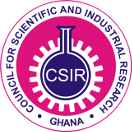Please use this identifier to cite or link to this item:
https://csirspace.foodresearchgh.site/handle/123456789/1077Full metadata record
| DC Field | Value | Language |
|---|---|---|
| dc.contributor.author | Curran, C. A. | - |
| dc.contributor.author | N`jai, A. E. | - |
| dc.contributor.author | Nerquaye-Tetteh, G. | - |
| dc.contributor.author | Diouf, N. | - |
| dc.date.accessioned | 2018-02-15T09:45:43Z | - |
| dc.date.available | 2018-02-15T09:45:43Z | - |
| dc.date.issued | 1985 | - |
| dc.identifier.citation | FAO Expert Consultation on Fish Technology in Africa, Lusaka, Zambia, 21-23 January, 1-15 | en_US |
| dc.identifier.uri | https://csirspace.foodresearchgh.site/handle/123456789/1077 | - |
| dc.description.abstract | Heavy losses of traditional cured fish are incurred in the Gambia due to insect attack during drying and storage. In an attempt to improve processing and reduce blowfly infestation, a one-tonne prototype solar dome dryer was constructed and tested at Brufut, one of the major coastal artisanal fish landing and processing sites. Several drying trials were carried out using five different species with the intention of preparing products suited to the local market. The performance of the dryer was compared with sun drying on traditional, flat chicken wire and sloping chicken wire racks. The solar dome did not perform as well as expected from the results of trials on similar designs elsewhere. Very similar drying rates were obtained for sun and solar drying. The poor performance was attributed to the nature of the raw material (ie fermented fish) used to prepare guedja, the local dried product, and the weather. In addition, blowfly infestation was a problem if sufficient care was not taken to prevent the entry of flies into the dryer. Low initial temperatures had to be used in the dome to avoid cooking the fragile raw material so that improved drying rates could not be achieved. These temperatures were too low to kill either the adult blowflies which gained access to the dryer or any larvae that hatched from eggs laid on the drying fish. The dull, wet weather made it difficult to attain and maintain higher temperatures when these were required during the later stages of drying | en_US |
| dc.language.iso | en | en_US |
| dc.publisher | Food and Agriculture Organization | en_US |
| dc.subject | Fish drying | en_US |
| dc.subject | Solar drying | en_US |
| dc.subject | Fish processing | en_US |
| dc.subject | Gambia | en_US |
| dc.subject | Fish dryer | en_US |
| dc.subject | Solar dryer | en_US |
| dc.title | Testing a solar dome fish dryer in the Gambia | en_US |
| dc.type | Other | en_US |
| Appears in Collections: | Food Research Institute | |
Files in This Item:
| File | Description | Size | Format | |
|---|---|---|---|---|
| Testing_Solar_Dome_Fish_Dryer_Gambia_Curran_et al.pdf | 11.23 MB | Adobe PDF |  View/Open |
Items in CSIRSpace are protected by copyright, with all rights reserved, unless otherwise indicated.
